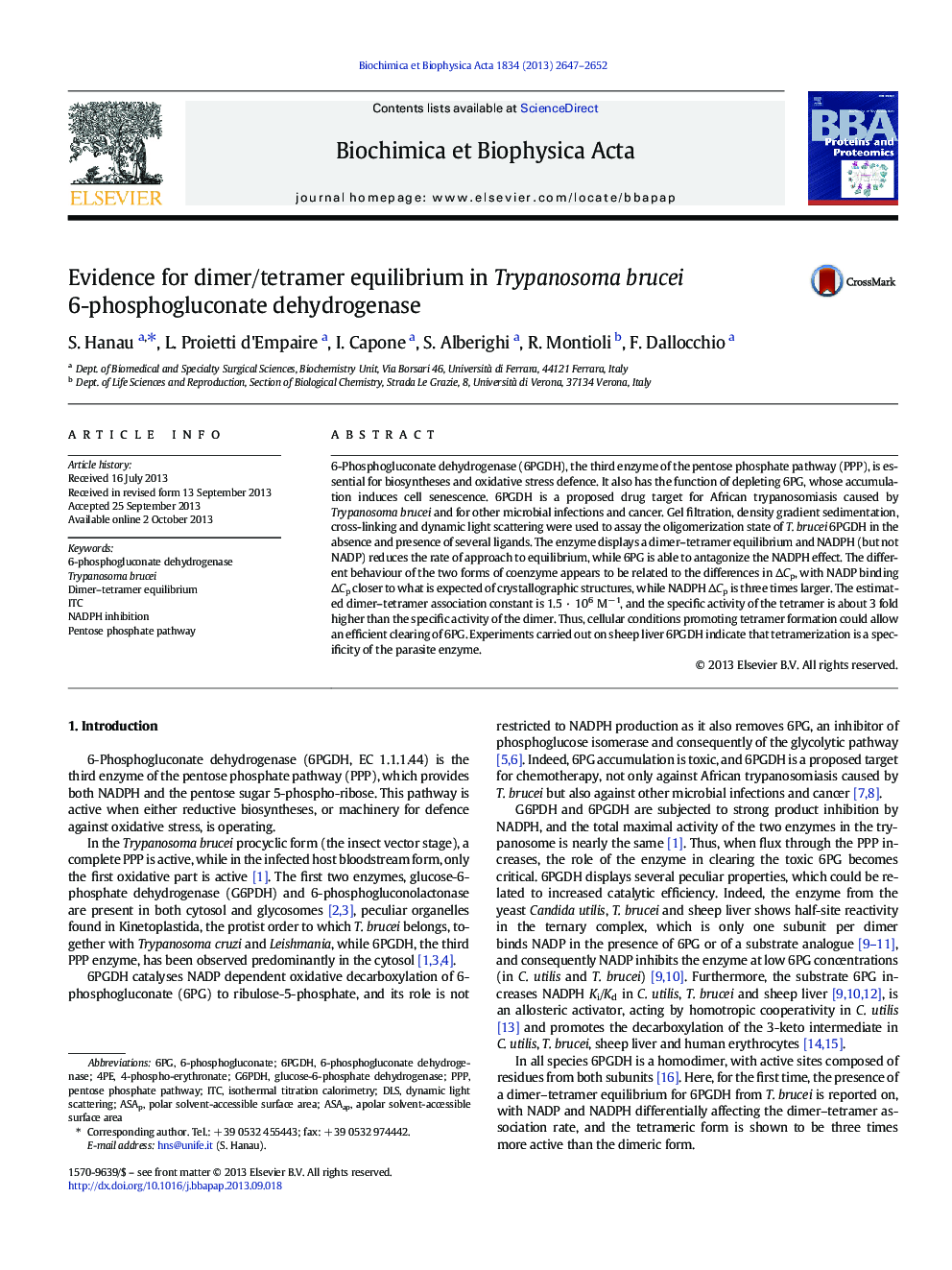| کد مقاله | کد نشریه | سال انتشار | مقاله انگلیسی | نسخه تمام متن |
|---|---|---|---|---|
| 7560908 | 1491448 | 2013 | 6 صفحه PDF | دانلود رایگان |
عنوان انگلیسی مقاله ISI
Evidence for dimer/tetramer equilibrium in Trypanosoma brucei 6-phosphogluconate dehydrogenase
دانلود مقاله + سفارش ترجمه
دانلود مقاله ISI انگلیسی
رایگان برای ایرانیان
کلمات کلیدی
DLSPPPITCTrypanosoma bruceiG6PDH6PGDH6PG6-phosphogluconate dehydrogenase - 6-فسفوگلاوکونات دهیدروژناز6-phosphogluconate - 6-فسفوگلوکوناتpentose phosphate pathway - مسیر پنتوز فسفاتASAP - هر چه سریعترDynamic Light Scattering - پراکندگی نور دینامیکیIsothermal titration calorimetry - کالری سنجی تیتاسیون ایزوترمالglucose-6-phosphate dehydrogenase - گلوکز 6-فسفات دهیدروژناز
موضوعات مرتبط
مهندسی و علوم پایه
شیمی
شیمی آنالیزی یا شیمی تجزیه
پیش نمایش صفحه اول مقاله

چکیده انگلیسی
6-Phosphogluconate dehydrogenase (6PGDH), the third enzyme of the pentose phosphate pathway (PPP), is essential for biosyntheses and oxidative stress defence. It also has the function of depleting 6PG, whose accumulation induces cell senescence. 6PGDH is a proposed drug target for African trypanosomiasis caused by Trypanosoma brucei and for other microbial infections and cancer. Gel filtration, density gradient sedimentation, cross-linking and dynamic light scattering were used to assay the oligomerization state of T. brucei 6PGDH in the absence and presence of several ligands. The enzyme displays a dimer-tetramer equilibrium and NADPH (but not NADP) reduces the rate of approach to equilibrium, while 6PG is able to antagonize the NADPH effect. The different behaviour of the two forms of coenzyme appears to be related to the differences in ÎCp, with NADP binding ÎCp closer to what is expected of crystallographic structures, while NADPH ÎCp is three times larger. The estimated dimer-tetramer association constant is 1.5 · 106 Mâ 1, and the specific activity of the tetramer is about 3 fold higher than the specific activity of the dimer. Thus, cellular conditions promoting tetramer formation could allow an efficient clearing of 6PG. Experiments carried out on sheep liver 6PGDH indicate that tetramerization is a specificity of the parasite enzyme.
ناشر
Database: Elsevier - ScienceDirect (ساینس دایرکت)
Journal: Biochimica et Biophysica Acta (BBA) - Proteins and Proteomics - Volume 1834, Issue 12, December 2013, Pages 2647-2652
Journal: Biochimica et Biophysica Acta (BBA) - Proteins and Proteomics - Volume 1834, Issue 12, December 2013, Pages 2647-2652
نویسندگان
S. Hanau, L. Proietti d'Empaire, I. Capone, S. Alberighi, R. Montioli, F. Dallocchio,